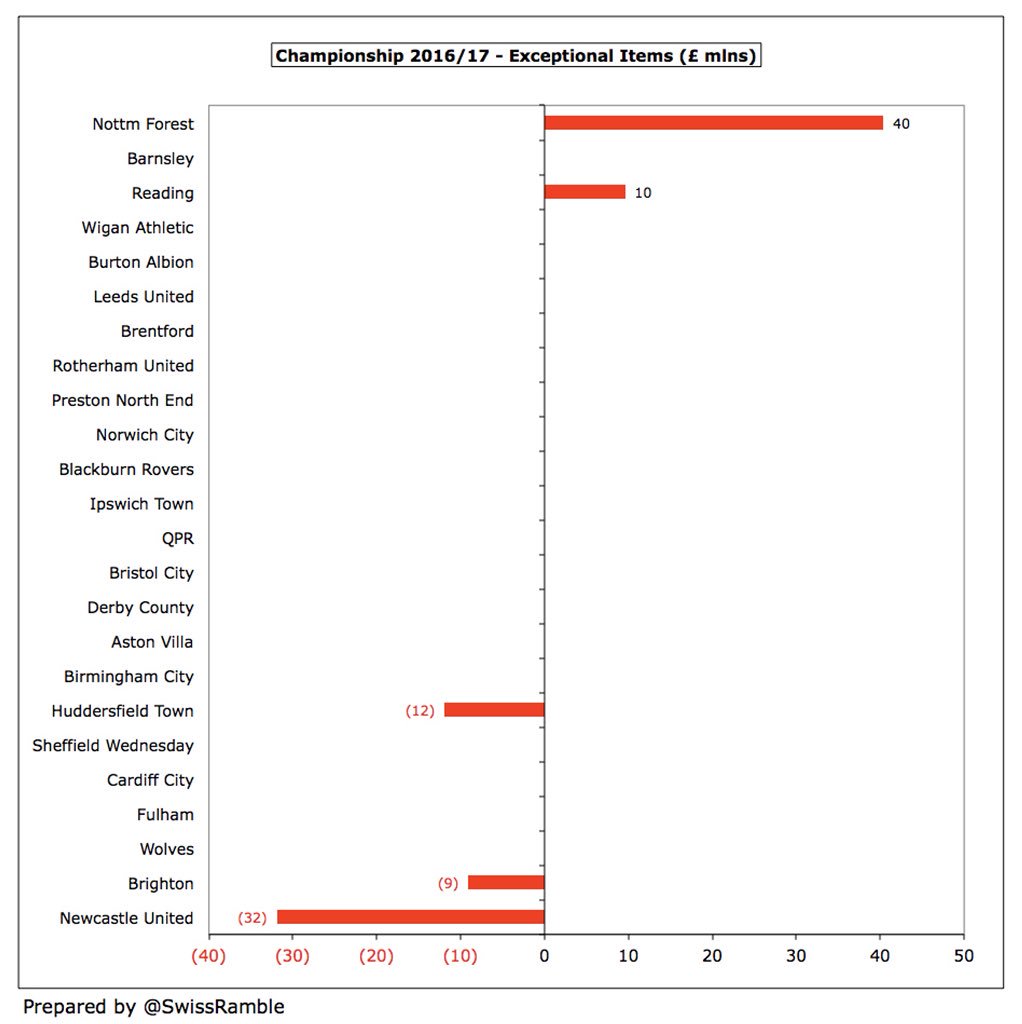Discover and read the best of Twitter Threads about #CardiffCity
Most recents (23)
#CardiffCity 2020/21 financial results covered a season when they finished 8th in the Championship. Manager Neil Harris was replaced by Mick McCarthy in January 2021, since succeeded by Steve Morison In November 2021. Some thoughts in the following thread.
#CardiffCity pre-tax loss narrowed from £12m to £11m, as revenue rose £9m (20%) from £46m to £55m and operating expenses were cut £3m (4%), though profit on player sales fell £11m from £14m to £3m. 

#CardiffCity broadcasting income rose £11m (31%) from £37m to £48m, as money deferred for games played after 2020 accounts offset lower parachute payments. Match day fell £2.5m (68%) from £3.7m to £1.2m, as games played without fans. Commercial slightly increased to £5.6m. 

#CardiffCity 2019/20 accounts cover a season when they finished 5th in the Championship following relegation from the PL, losing in the play-off semi-final. Manager Neil Warnock was replaced by Neil Harris in November 2019, since succeeded by Mick McCarthy. Some thoughts follow.
#CardiffCity swung from £3m profit to £12m loss, as revenue fell £79m (63%) from £125m to £46m due to relegation and COVID, partly offset by profit on player sales rising £12m to £14m, while expenses were down £33m and no repeat of prior year £20m provision for the Sala transfer. 

#CardiffCity £79m revenue fall was largely driven by broadcasting’s £70m (66%) decrease from £107m to £37m, due to lower TV money in Championship, though commercial also dropped £5m (48%) from £10m to £5m and match day fell £4m (53%) from £8m to £4m. 

Earlier this week I posted a thread on the 2018/19 financials for the Big Six Premier League clubs. Today I am going to look at the numbers for the Other 14 clubs #AFCB #BHAFC #BurnleyFC #CardiffCity #CPFC #EFC #FFC #HTAFC #LCFC #NUFC #SaintsFC #WatfordFC #WHUFC #WWFC
Now that all the Premier League clubs have published their 2018/19 financials, we can compare the results, but we will do this a little differently by separating the analysis into two parts, as the numbers are so different for: (1) the Big Six clubs; and (2) the Other 14 clubs.
I’ve prepared a few more of the financial fact sheets for selected football clubs. To be clear, this is not new information as such, but just a more succinct presentation of previous data. This thread covers #AVFC, #AFCB, #CardiffCity, #HTAFC, #NCFC, #SUFC, #WatfordFC and #WWFC.
#AVFC posted huge £69m net loss. Operating loss even higher at £115m, including £46m promotion payments, but £14m HS2 compensation. Offset by £36m stadium sale and £11m player sales. Revenue fall due to lower parachute payments. Debt-free after write-offs and equity conversion. 



#AFCB lost money 2 years in a row, as revenue has fallen from £136m to £131m, while wage bill has grown from £72m to £111m. Little benefit from low player sales. Debt up to £100m, 9th highest in PL. Spent £150m on player purchases in last 2 years with transfer debt up to £81m. 



#CardiffCity financial results for 2018/19 covered a season in the Premier League following promotion, but their stay in the top flight was brief, as it culminated in relegation to the Championship after they finished in 18th place. Some thoughts in the following thread.
Unfortunately, the 2018/19 season will also be remembered for the tragic death of striker Emiliano Sala in a plane crash following his transfer from French club Nantes. #CardiffCity are disputing the payment of a transfer fee, but have “prudently” booked a £19.5m provision.
#CardiffCity swung from £39m loss before tax in the Championship to £3m profit, thanks to revenue surging £90m from £35m to £125m, though competing in the Premier League increased expenses by £31m. Still reported £0.8m loss after tax, due to £3m tax charge. 
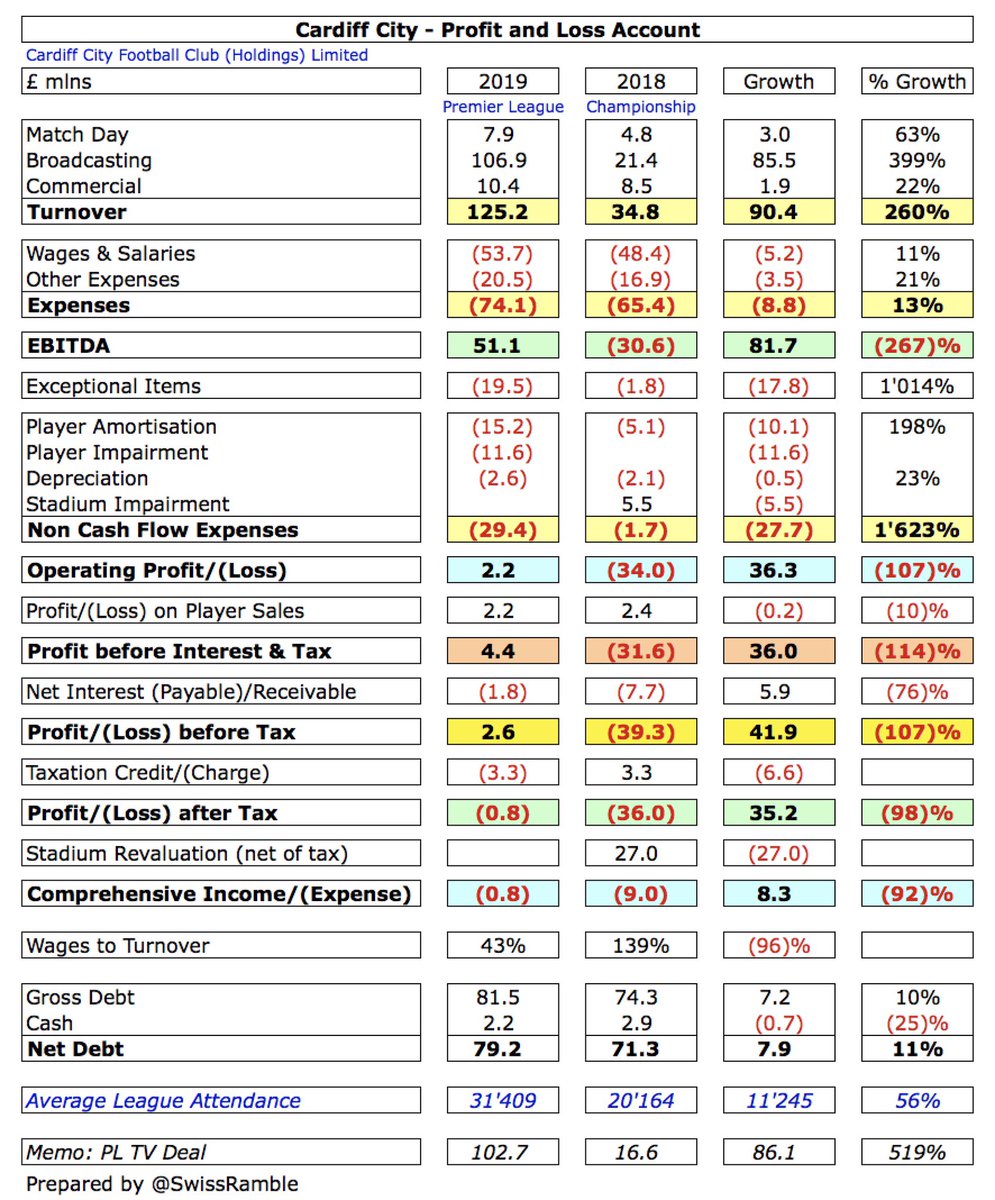
I recently wrote about the importance of the cash flow statement in assessing the financial performance of a football club, focusing on the Premier League. Since then I have had a few requests to do the same for the Championship, so let’s take a look in the following thread.
A club’s profit and loss account is easy to understand, i.e. basically revenue less expenses (mainly player wages), but this is a notional profit based on the accountants’ accruals concept, which can be very different from actual cash movements.
This is important, as the main reason that football clubs fail is cash flow problems. It does not matter how large your revenue is (or your profits are), if you do not have the cash to pay your players, suppliers or indeed the taxman, then you will find yourself in trouble.
Look, they're even reporting the #Cardiff1919RaceRiots in #Ireland. This is from 14th June 1919 tinyurl.com/Iwerddon
#Iwerddon #Newyddion #Wales #Cardiff #Cardiff1919RaceRiots
#Iwerddon #Newyddion #Wales #Cardiff #Cardiff1919RaceRiots
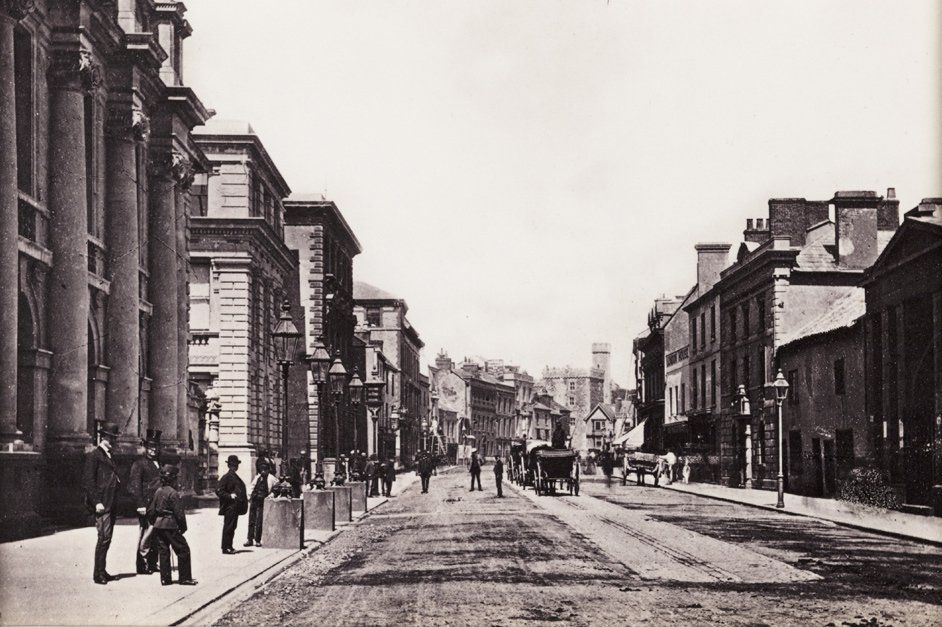
dyma bapur newydd o Iwerddon 🇮🇪, darllenwch👀 mwy am y digwyddiadau yma. Cafodd ei gyhoeddi heddiw am Dydd Sadwrn, Mehefin 14
tinyurl.com/Iwerddon
#CardiffRaceRiots1919
tinyurl.com/Iwerddon
#CardiffRaceRiots1919
@CenturyIRL has led on the #CardiffRaceRiots photo with an image of #StMarysStreet in #CardiffCity. On the left is currently a whole bunch of businesses including @KongsCardiff, @sainsburys along w/ @cardiff_castle and @TheGoatMajorPub in the distance
#CardiffRaceRiots1919

#CardiffRaceRiots1919

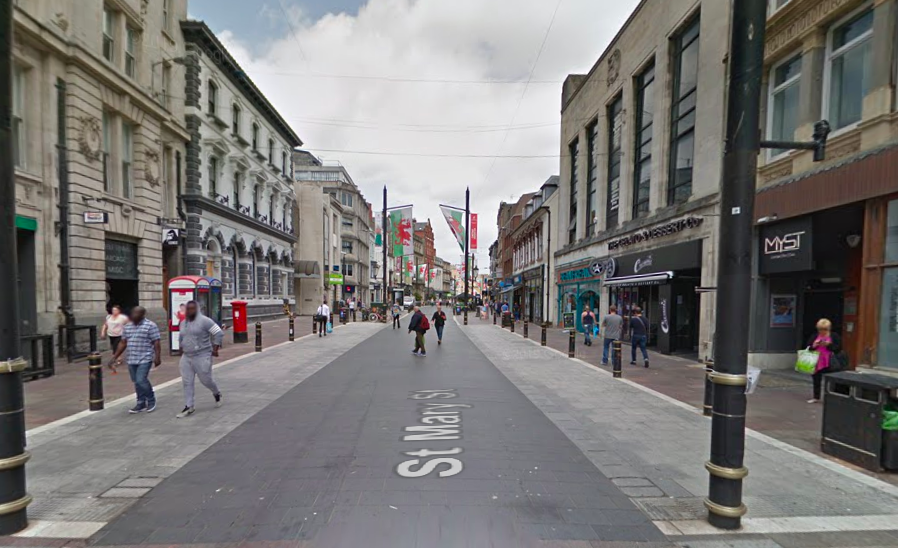
Sunderland’s 2017/18 financial results covered a second successive relegation. Having finished bottom of the Premier League in 2016/17, they repeated this feat in the Championship to drop into League One. Some thoughts in the following thread #SAFC
This was the last season under former owner Ellis Short before Stewart Donald bought the club in May 2018. Since then, the financial picture at #SAFC has greatly changed, but it is still instructive to look at these financials to understand the reasons for their fall from grace.
Following relegation #SAFC loss almost doubled from £10.2m to £19.9m, as revenue basically halved from £123.5m to £63.7m and profit on player sales fell £26.5m to £6.6m. Offset by once-offs: £8.2m profit on sale of Charlie Hurley Centre; no repeat of 16/17 £9.7m Alvarez payment. 
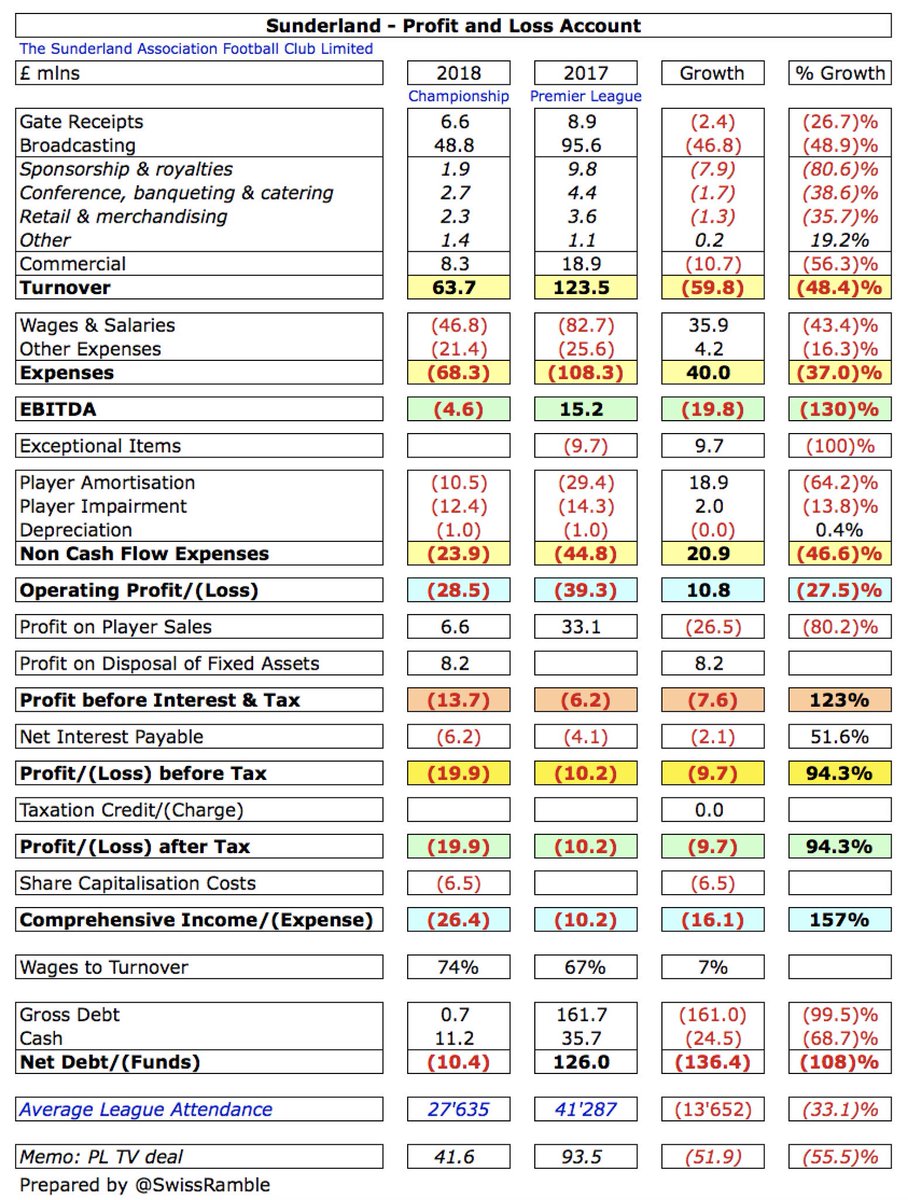
Although Derby County’s fans will be bitterly disappointed after losing to Aston Villa in the 2018/19 Championship play-off final, it might still be worth looking at their 2017/18 accounts to show how the club is trying to meet its financial challenges. Some thoughts follow #DCFC
#DCFC went from a £7.9m loss to £14.6m profit, mainly due to £40m from selling & leasing back Pride Park Stadium. Revenue was only up £0.6m (2%) to £29.6m, though this was the club’s highest in the Championship without parachute payments. Profit on player sales fell £12m to £4m. 
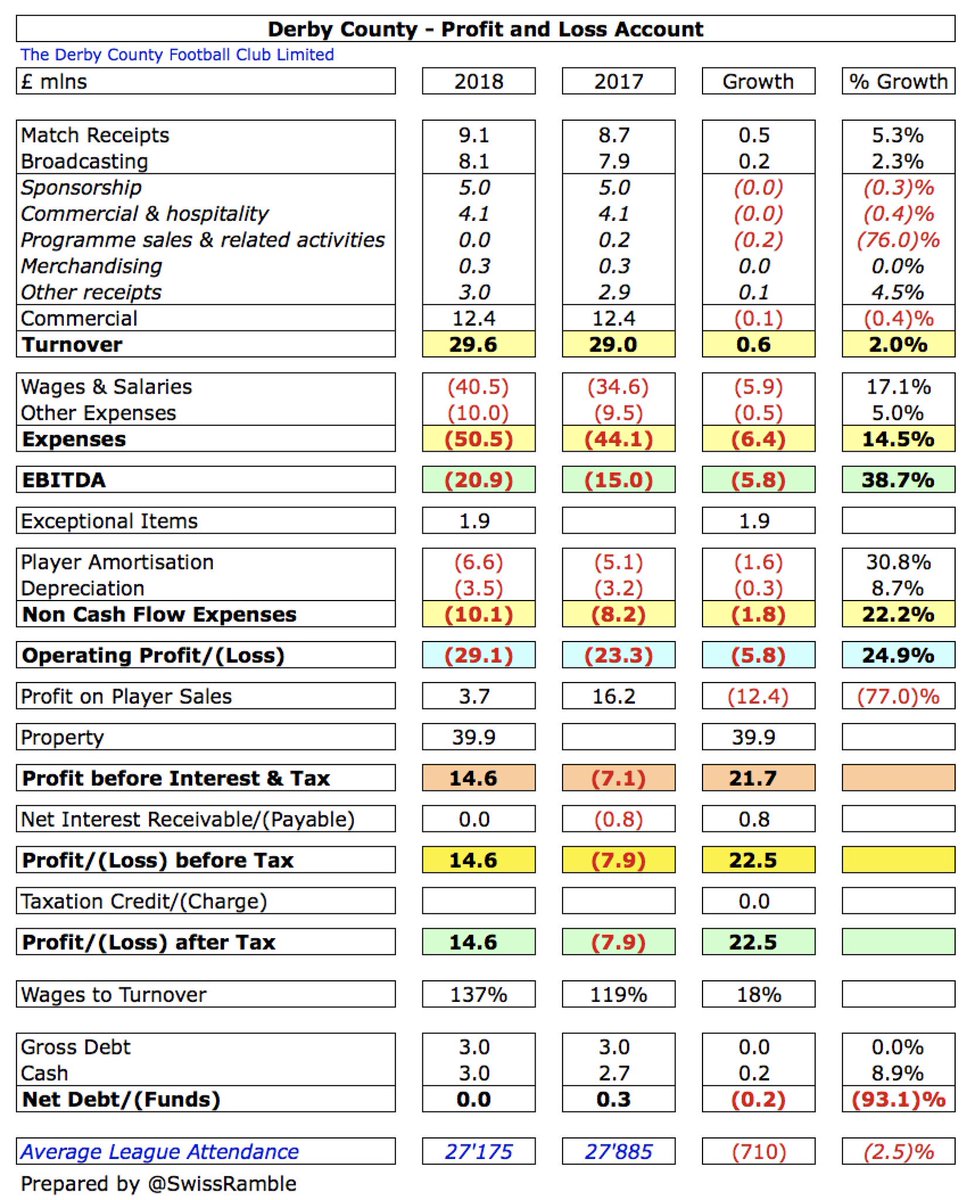
Main reason for #DCFC revenue increase was an away FA Cup game at Manchester United, which meant match receipts were up £0.5m (5%) to £9.1m. Broadcasting also rose £0.2m (2%) to £8.1m, due to higher Premier League solidarity payment, but commercial was down £0.1m to £12.4m. 
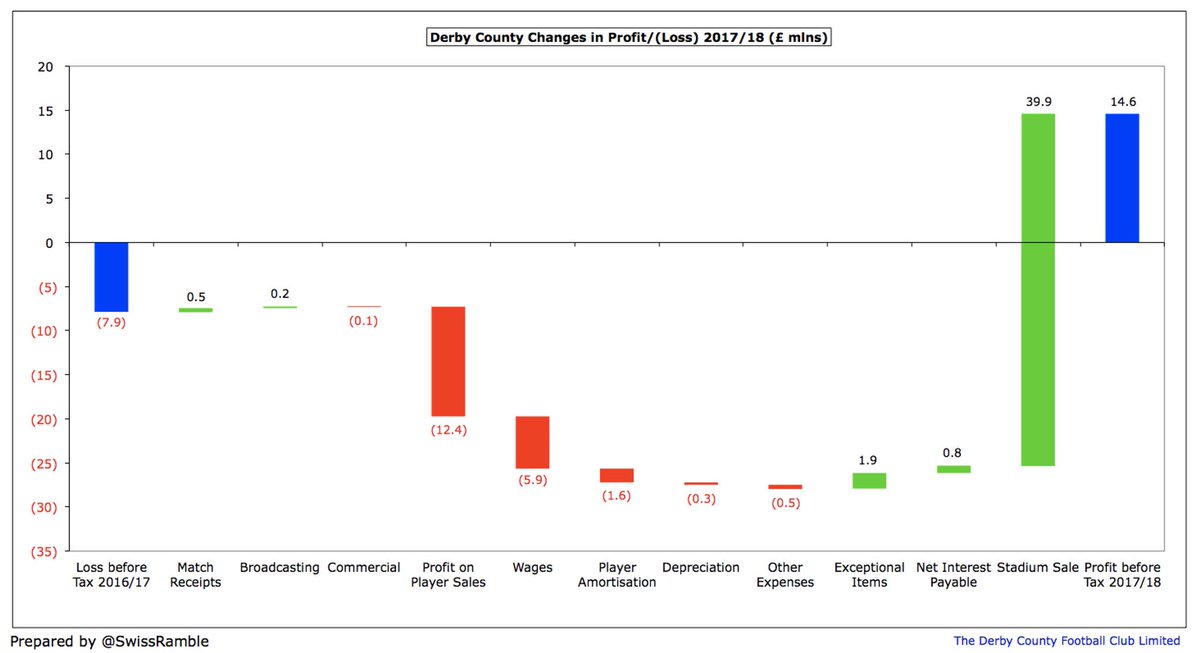
Brentford’s financial results for 2017/18 covered “yet another season of consolidation and progress”, when the Bees finished 9th in the Championship under head coach Dean Smith, their fourth consecutive top 10 place. Some thoughts in the following thread #BrentfordFC
#BrentfordFC loss widened from £1.0m to £3.9m, due to “increased football related costs”. Revenue was stable at £12.7m, due to ”similar on-pitch performance and attendance year-on-year”, while profit on player sales rose £1.3m to £14.1m. 
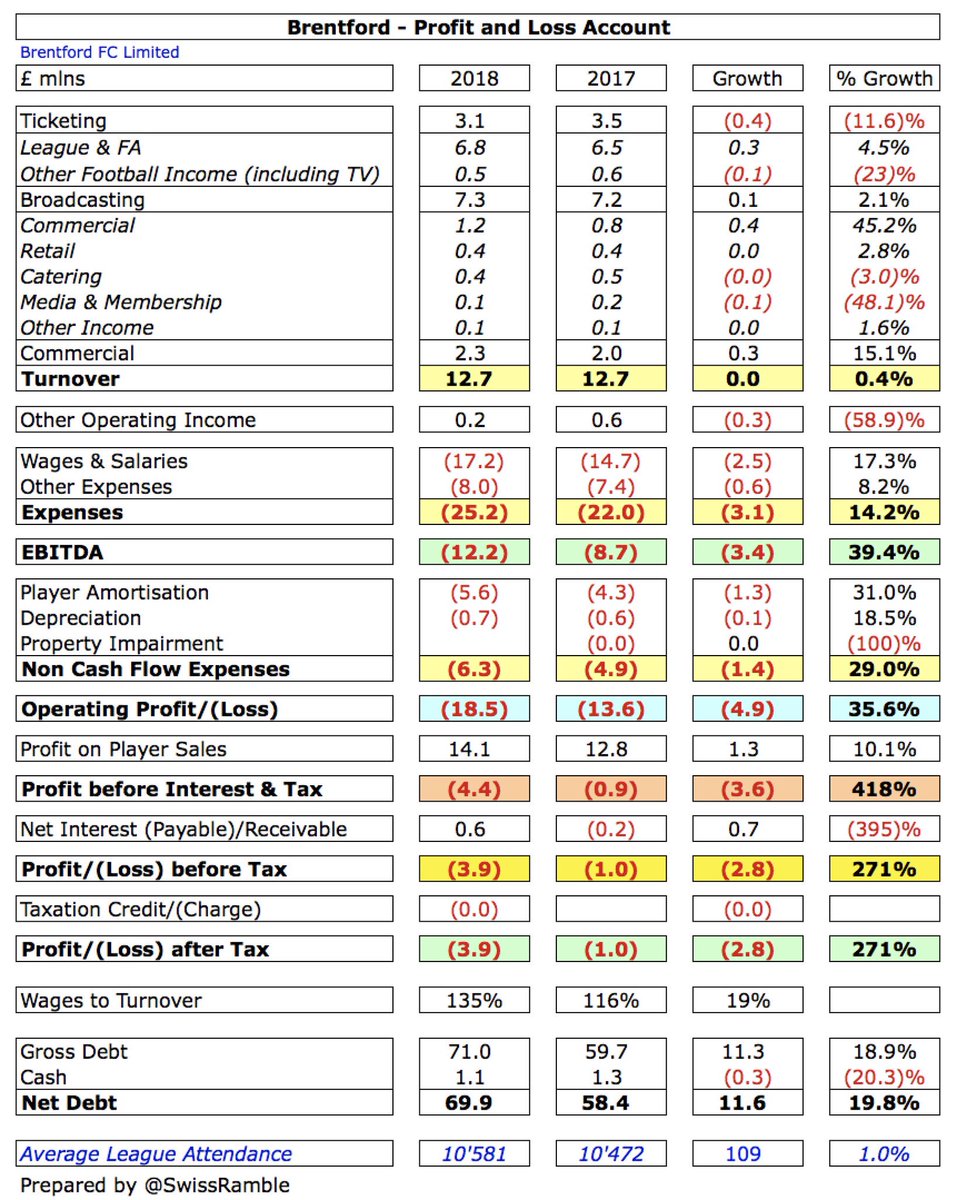
#BrentfordFC revenue was flat at £12.7m, as ticketing income fell £0.4m (12%) to £3.1m, offset by increases in commercial, up £0.3m (15%) to £2.3m, and broadcasting, up £0.1m (2%) to £7.3m. Other operating income dropped £0.3m to £0.2m. 
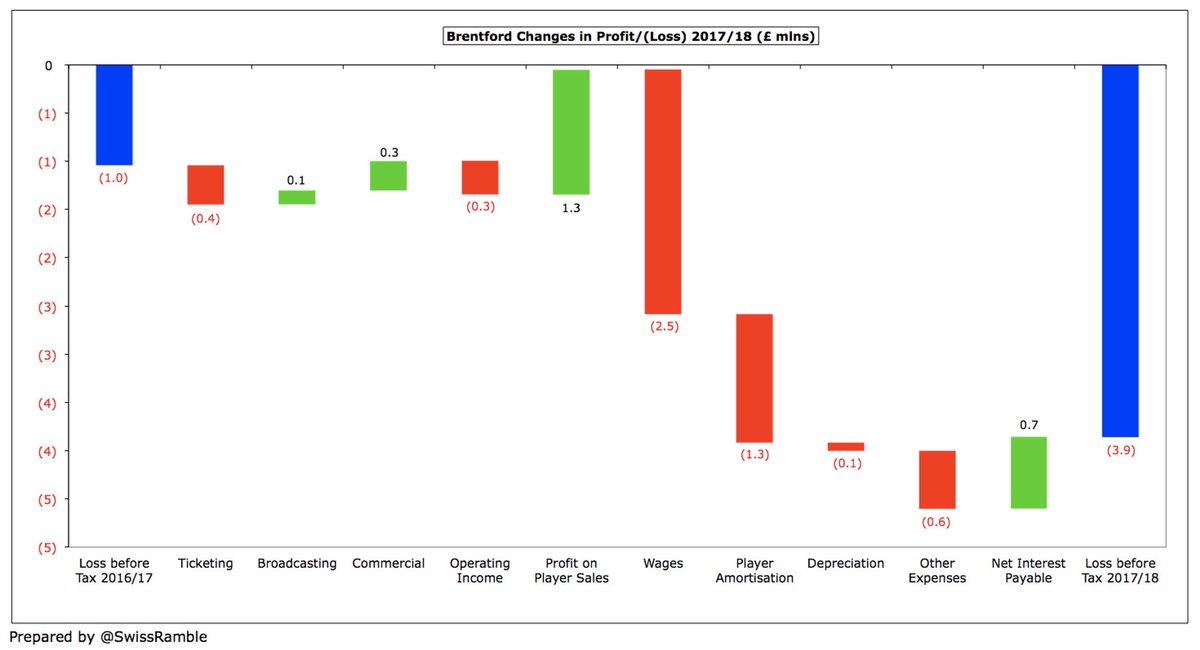
Aston Villa’s 2017/18 financial results covered their second season in the Championship with Tony Xia as chairman following relegation from the Premier League. They finished 4th, but narrowly missed out on promotion after losing in the play-off final. Some thoughts follow #AVFC
Following that defeat, #AVFC “experienced significant liquidity problems”, including a missed tax payment to HMRC, which led to a rescue by billionaire businessmen Nassef Sawiris and Wes Edens, who injected £68m of funding with NSWE SCS becoming the club’s controlling owners.
#AVFC loss increased by £21m from £15m to £36m, as revenue dropped £5m (7%) from £74m to £69m and profit on player sales fell £11m from £27m to £16m. On the other hand, the club received £3m compensation for HS2 rail project, which will go through part of the training ground. 
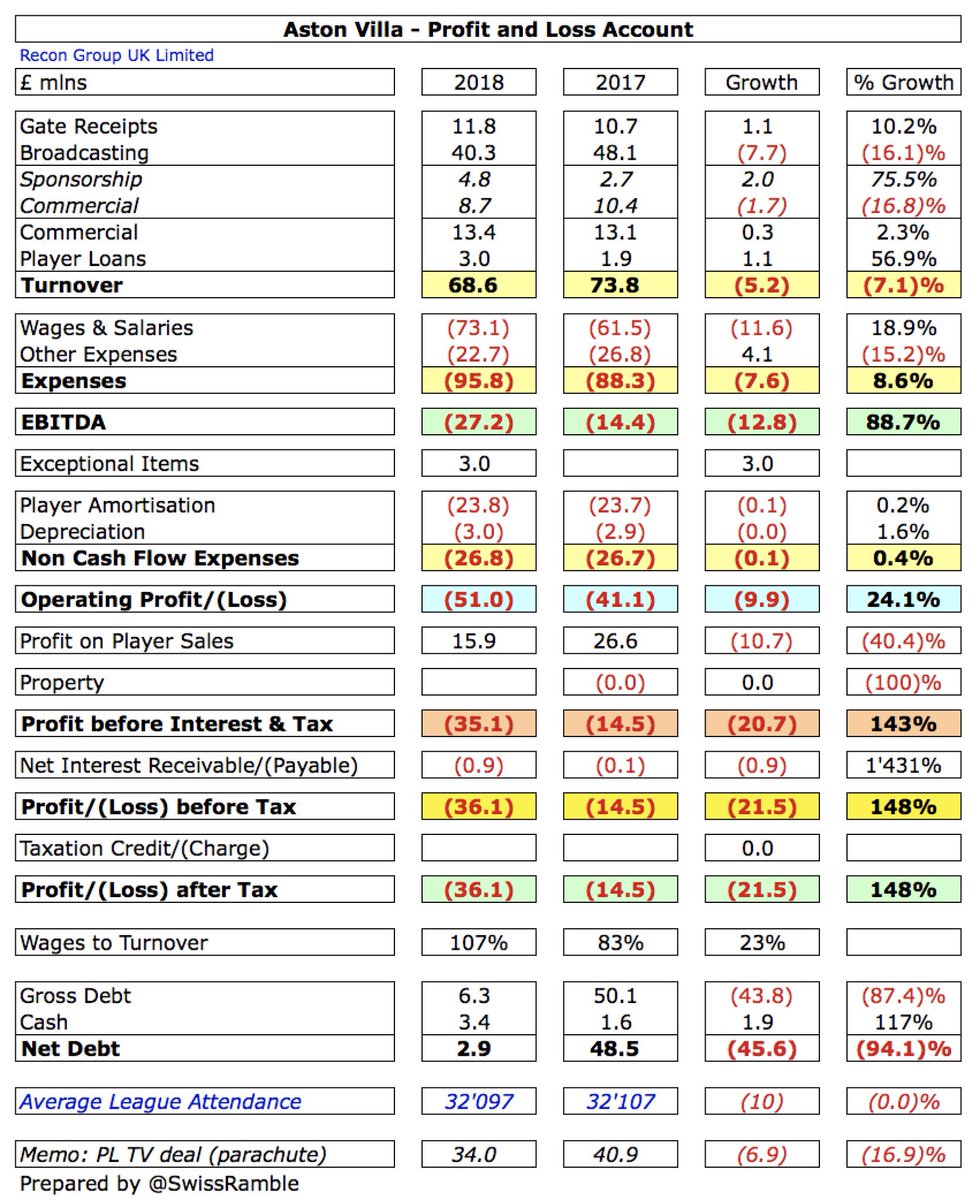
Wolverhampton Wanderers 2017/18 financial results covered a successful season, when the club was promoted to the Premier League as champions after a six-year absence, led by head coach Nuno Espirito Santo under the ownership of Fosun International. Some thoughts follow #WWFC
#WWFC loss shot up from £23m to a breathtaking £57m, largely due to increased expenditure on players and wages plus an estimated £20m on bonuses and additional transfer fee payments following promotion. 
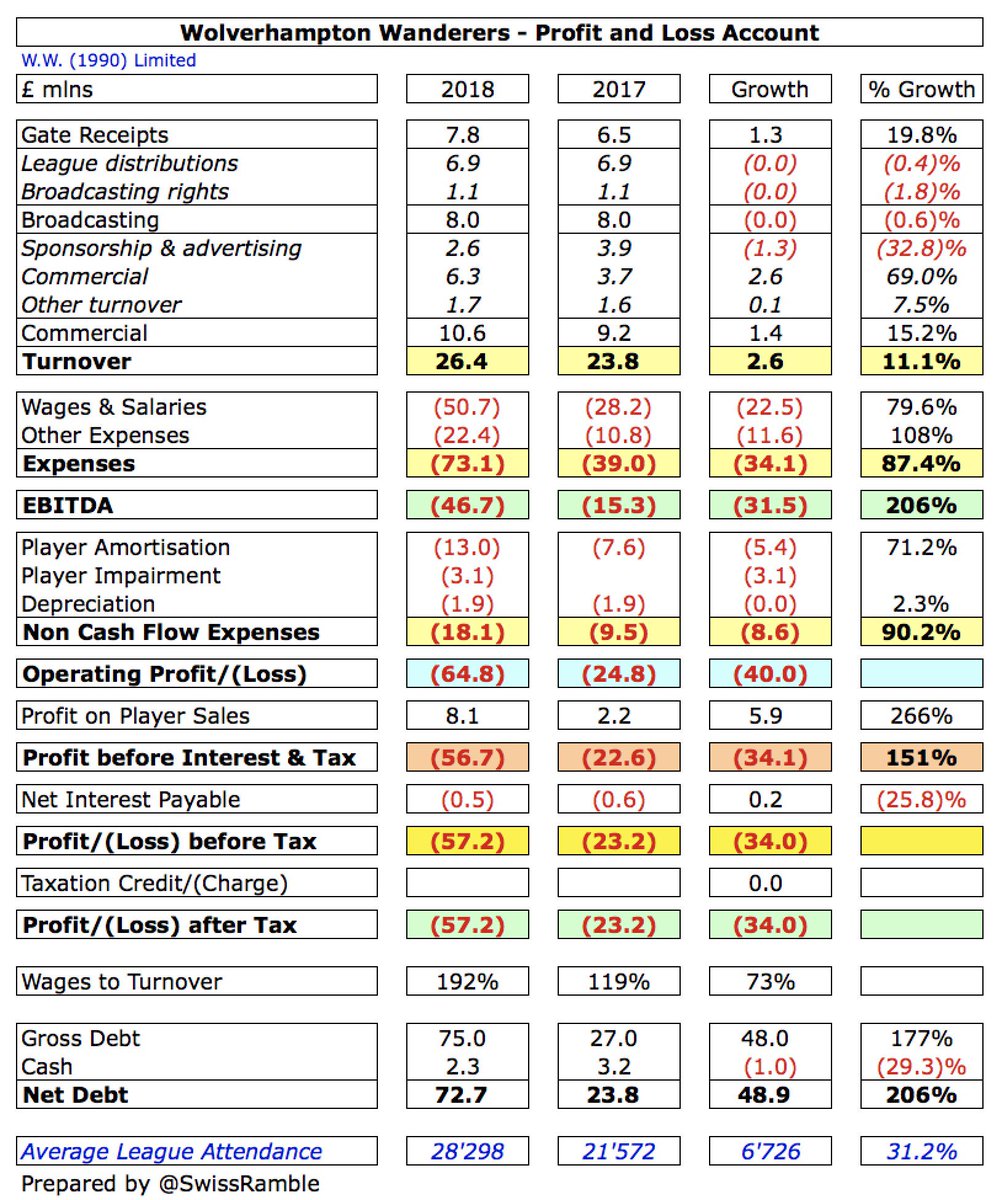
#WWFC revenue rose 11% (£2.6m) from £23.8m to £26.4m, as commercial increased £1.4m (15%) to £10.6m and gate receipts were up £1.3m (20%) to £7.8m, but broadcasting was flat at £8.0m. Profit on player sales was £5.9m higher at £8.1m. 

Preston North End’s 2017/18 financial results covered a season when they finished in an impressive 7th place in the Championship , just missing out on the play-offs. Alex Neil replaced Simon Grayson as manager in July 2017. Some thoughts in the following thread #pnefc
#pnefc made £2.6m profit before tax compared to a £0.4m loss the prior season, even though revenue fell very slightly (1%) to £13.3m. In contrast, profit on player sales increased £7.5m to £9.7m. Profit after tax up from £0.9m to £2.6m, as there was a £1.3m tax credit in 2016/17. 
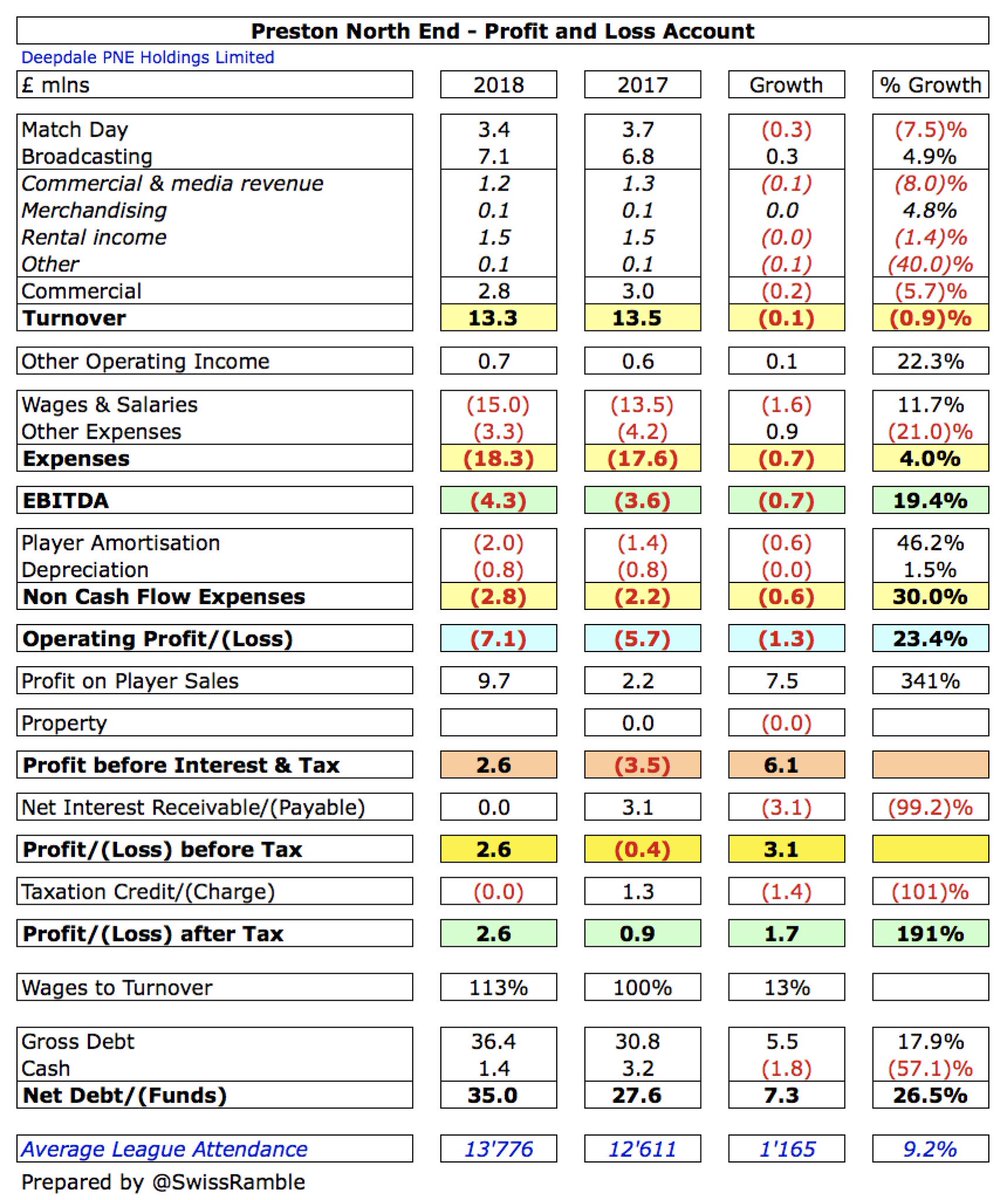
#pnefc £0.2m revenue decrease was due to falls in both match day, £0.3m (8%) to £3.4m, and commercial, £0.2m (6%) to £2.8m. This was partially offset by a £0.3m (5%) rise in broadcasting, due to a higher solidarity payment. 
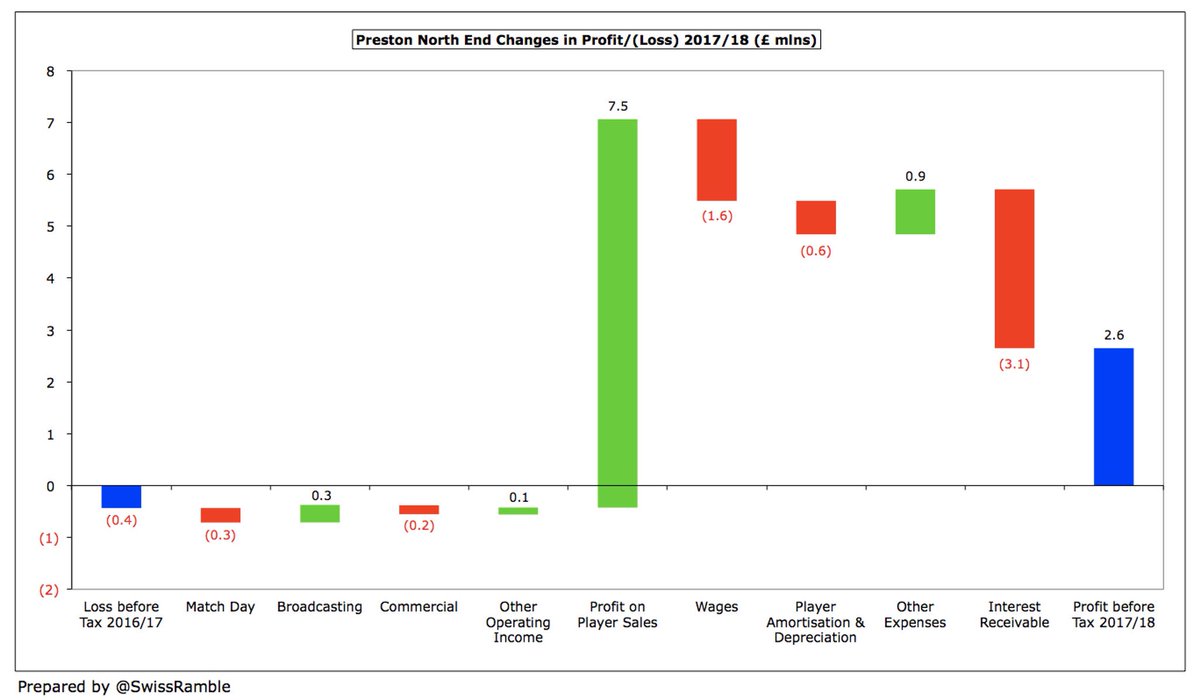
Nottingham Forest’s 2017/18 financial results covered the first full season under the ownership of Evangelos Marinakis (80%) & Sokratis Kominakis (20%), who bought the club in May 2017 from Fawaz Al-Hasawi, when they finished 17th in the Championship. Some thoughts follow #NFFC
#NFFC reported a £6m loss before tax compared to a £32m the prior season, though the £38m drop is a bit misleading, as it was largely due to loan write-offs decreasing from £40m to £5m. Revenue rose £1.9m (9%) to £22.7m, but profit on player sales fell £4.7m to £10.1m. 
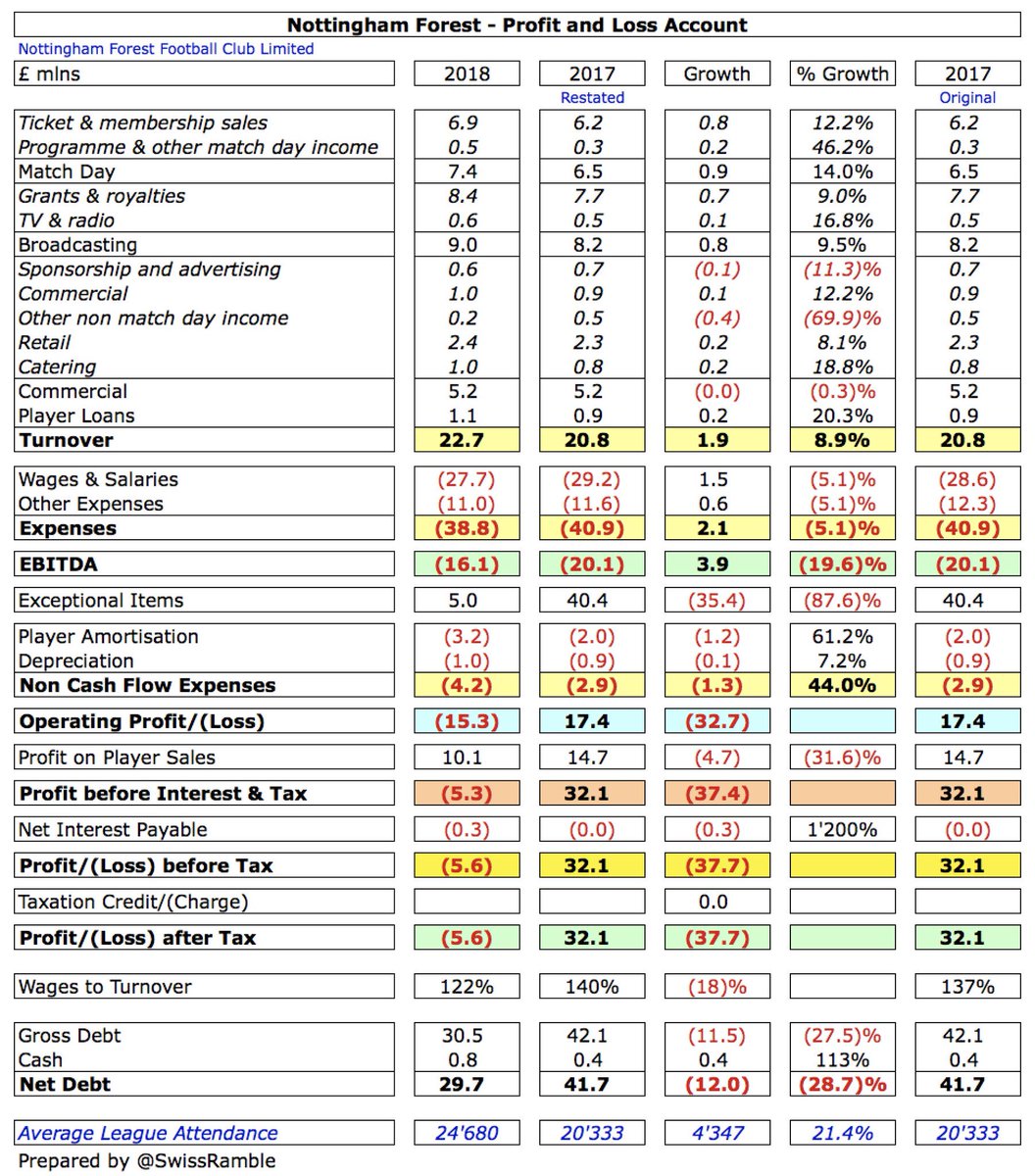
#NFFC £1.9m revenue increase was due to more broadcasting revenue from the EFL, up £0.8m (10%) to £9.0m, and higher ticketing income, up £0.9m (14%) to £7.4m, as attendances grew by 21%. Commercial income was flat overall at £5.2m, while player loans rose £0.2m to £1.1m. 

Sheffield United’s 2017/18 financial results covered their first season back in the Championship after six years in League One, when they mounted an unlikely challenge for a play-off place before finishing a creditable 10th. Some thoughts in the following thread #SUFC
#SUFC reduced the loss from £5.7m to £1.9m, highlighting the “significant impact” of promotion. Revenue rose 76% (£8.7m) to £20.0m, but this was more than offset by the cost of operating in a higher division, as wages rose £8.9m (89%) to £19.0m & other expenses up £1.9m to £8.5m. 
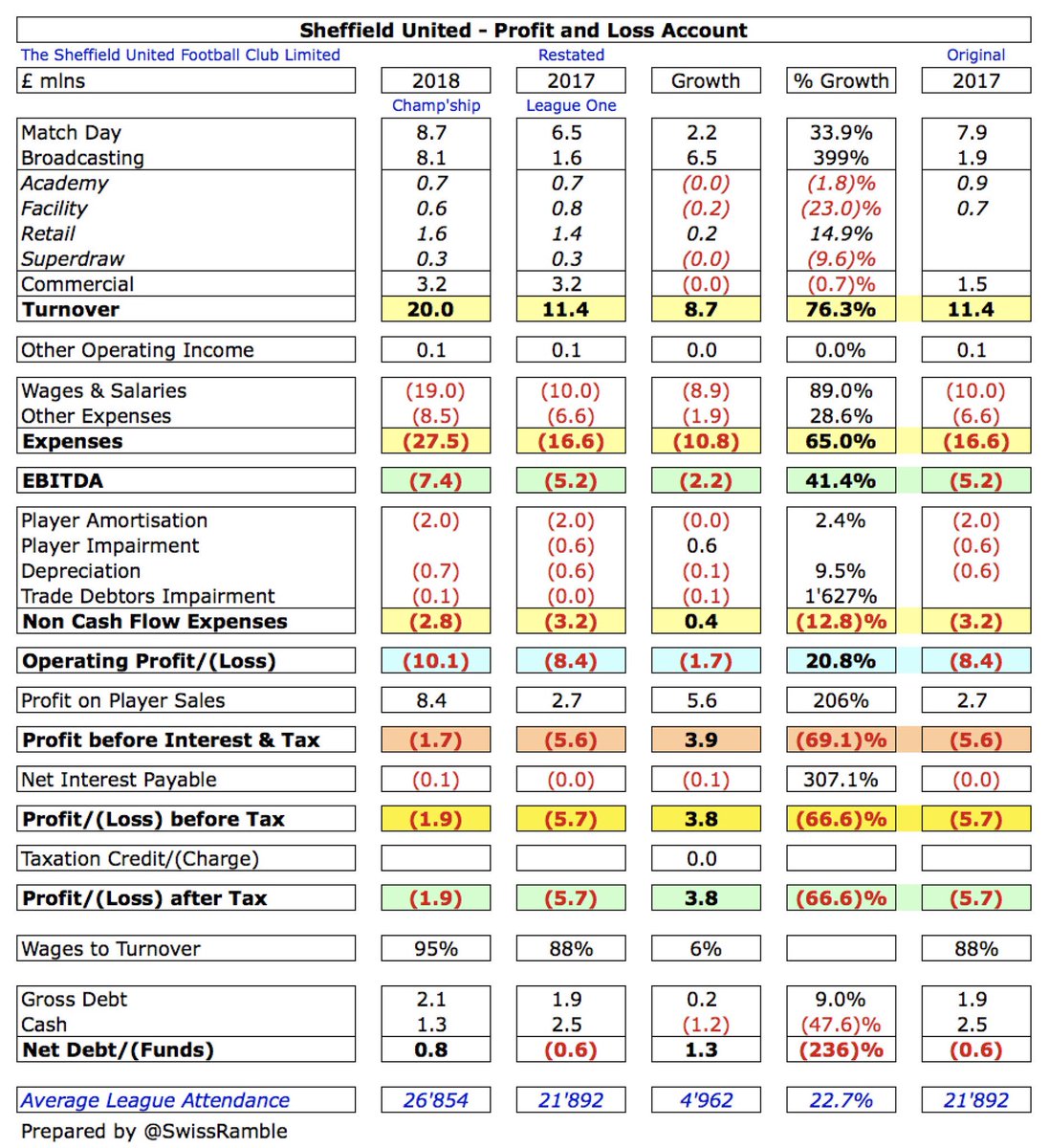
However, it is worth noting that #SUFC lower loss is essentially driven by higher profit on player sales, which rose £5.6m to £8.4m. If this is excluded, loss was actually larger in the Championship than League One. In addition, no repeat of prior season £0.6m player impairment. 
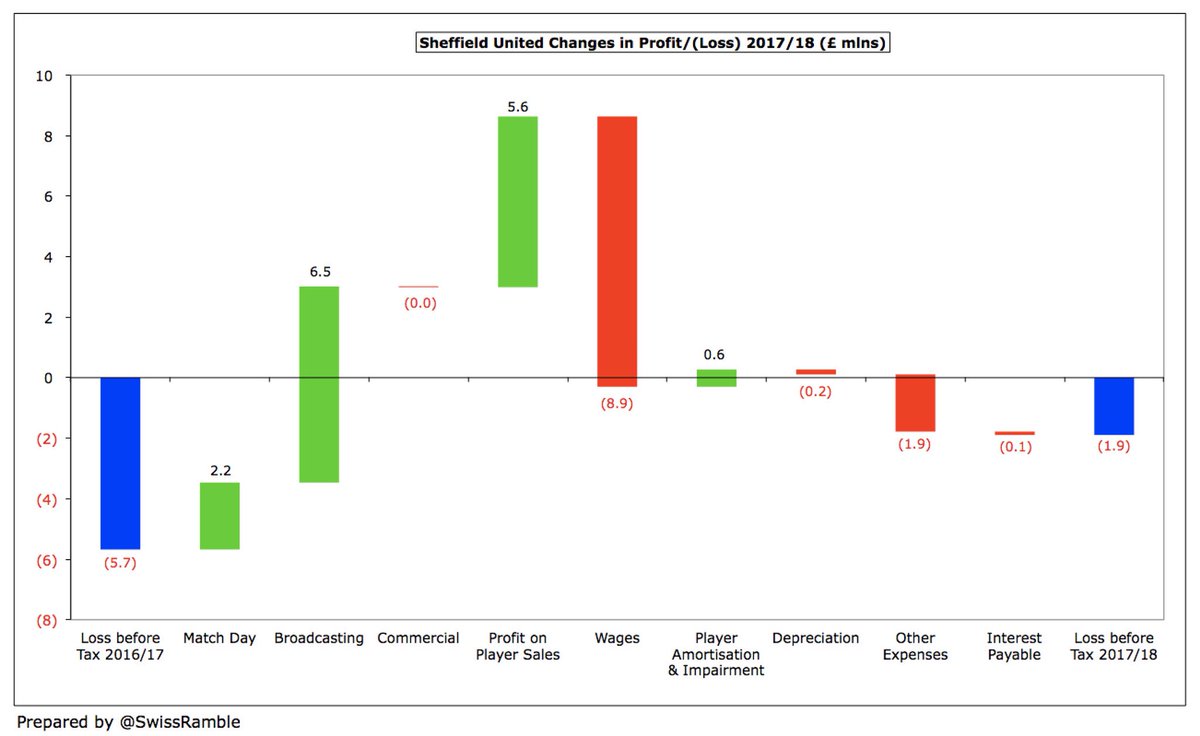
Middlesbrough’s 2017/18 financial results covered the season after relegation from the Premier League when they reached the Championship play-offs by finishing 5th before losing in the semi-finals. Tony Pulis replaced Garry Monk as manager in December. Some thoughts follow #Boro
Following relegation #Boro moved from a pre-tax £6.9m profit to a £6.4m loss, as revenue halved from £121m to £62m, though profit on player sales was up £4m to £15m. After tax, the decline was even steeper (from £11.5m profit to £6.6m loss), due to prior year’s £4.6m tax credit. 

#Boro £59m revenue decline was very largely driven by broadcasting’s £55m fall from £102m to £47m, as the £42m parachute payment was much lower than Premier League £99m distribution. Commercial also decreased £2.9m (26%) to £8.3m and match day was down £1.6m (18%) at £7.1m. 

Birmingham City’s 2017/18 financial results covered a season when they finished 19th in the Championship, only avoiding relegation on the final day, and had three managers: big-spending Harry Redknapp, Steve Cotterill and Garry Monk. Some thoughts in the following thread #BCFC
#BCFC loss before tax more than doubled from £16.4m to a barely credible £37.4m, primarily due to massive investment in the squad: wages rose £16.1m (71%) from £22.5m to £38.6m, while player amortisation increased by £5.0m from £2.6m to £7.6m. 
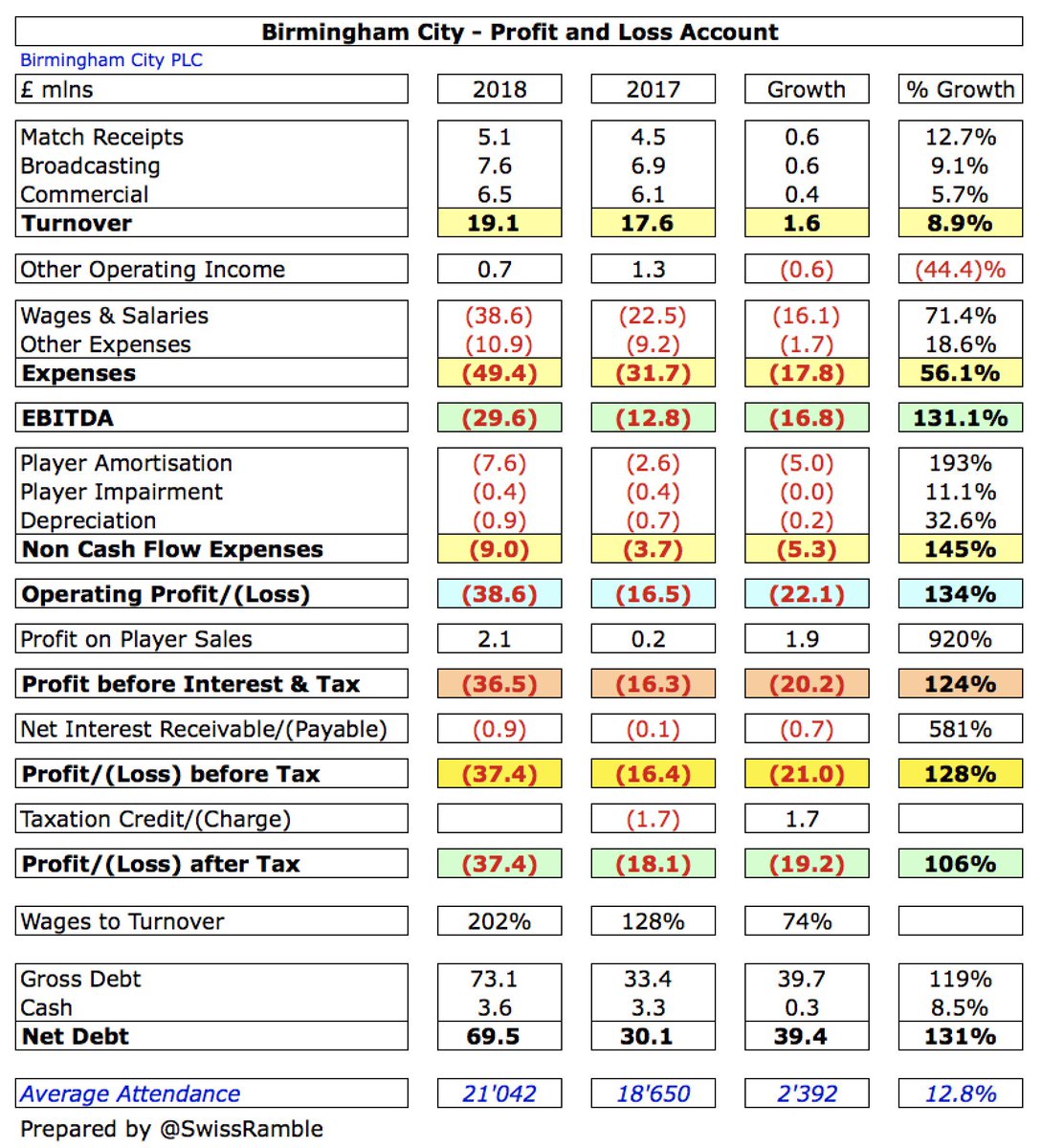
The higher #BCFC loss arose even though revenue grew by 9% (£1.6m) to £19.1m and profit on player sales was up £1.9m to £2.1m. All revenue streams increased: broadcasting £0.6m (9%) to £7.6m, match receipts £0.6m (13%) to £5.1m and commercial £0.4m (6%) to £6.5m. 
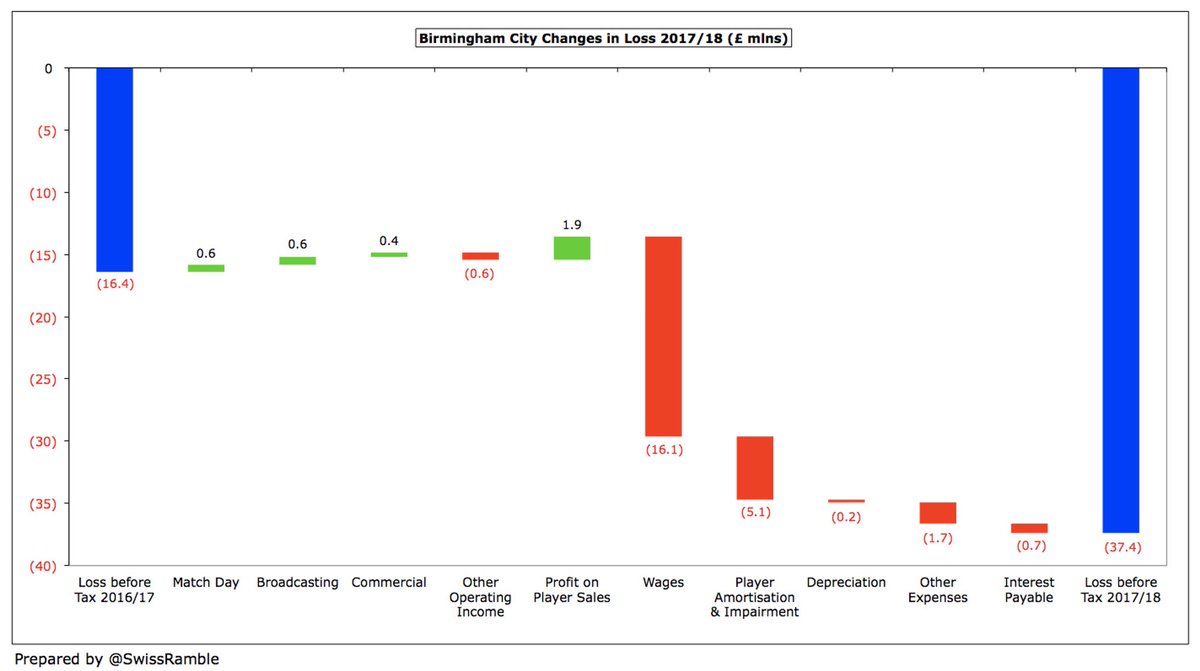
I published a study last week on where Premier League clubs source their money and what they spend it on by reviewing the clubs’ cash flow statements over the last decade. Today I do a similar exercise on Championship clubs – where the picture is very different.
THREAD: 🏴 #PremierLeague strength of schedule breakdown 📊
We rank each side on how many points they can expect to pick up from the next six games using our xG model 👇
We rank each side on how many points they can expect to pick up from the next six games using our xG model 👇
1. #ManCity – 14.3 xPoints
City will face sides with an average position of just above midtable over the next six games, looking at average of 2.38 xPoints per game.
#MCFC @City_Watch @City_Chief @SuperbiaProeIia @PicturedCity @City_Xtra @9320pod 👇
City will face sides with an average position of just above midtable over the next six games, looking at average of 2.38 xPoints per game.
#MCFC @City_Watch @City_Chief @SuperbiaProeIia @PicturedCity @City_Xtra @9320pod 👇
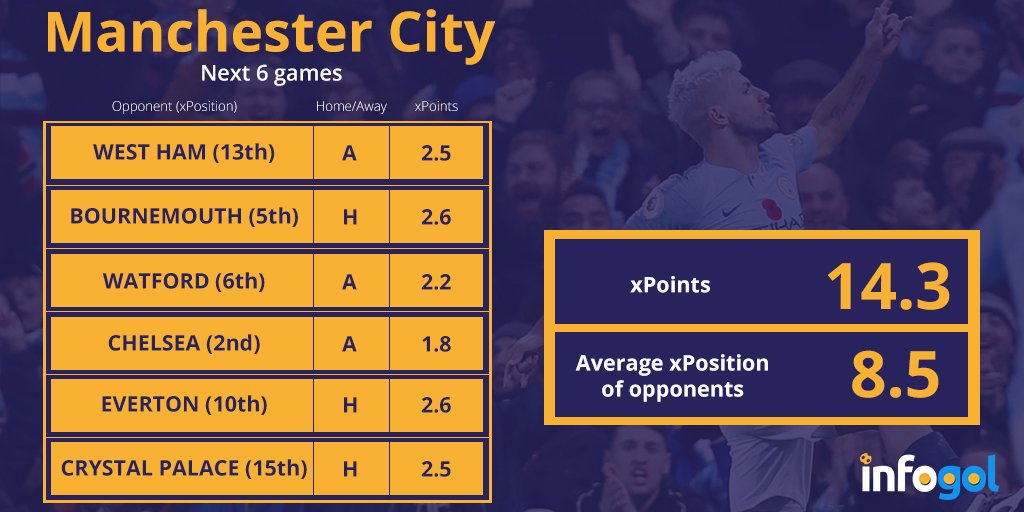
2. #LFC – 13.2 xPoints
Liverpool look set to continue their good start to the season. Despite facing #MUFC, we make the Reds’ trip to #WatfordFC their hardest fixture.
@AnfieldEdition @AnfieldHQ @TheRedmenTV @LFCData @anfieldonline @BassTunedToRed 👇
Liverpool look set to continue their good start to the season. Despite facing #MUFC, we make the Reds’ trip to #WatfordFC their hardest fixture.
@AnfieldEdition @AnfieldHQ @TheRedmenTV @LFCData @anfieldonline @BassTunedToRed 👇
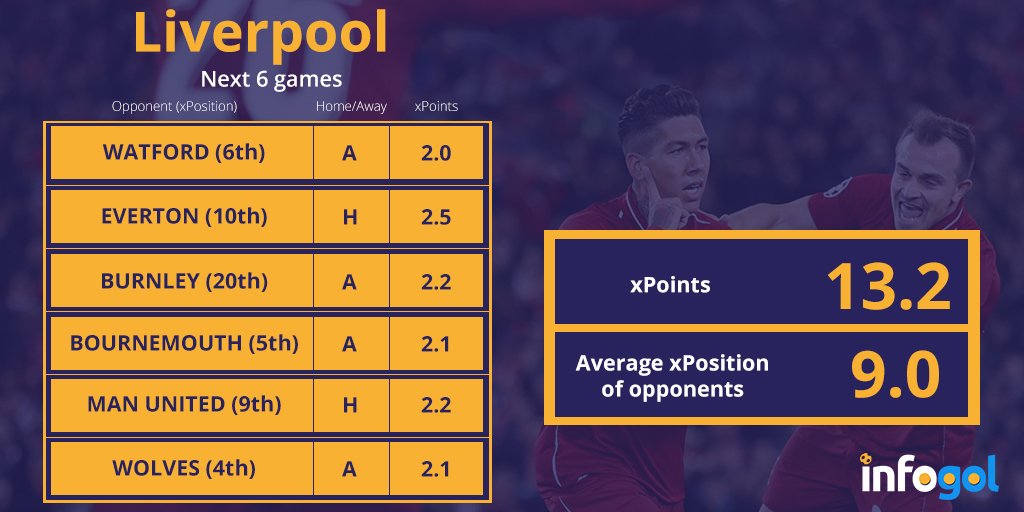
#BristolCity recently published their 2017/18 financial results, which cover a season when they finished a respectable 11th in the Championship and had a memorable run to the Carabao Cup semi-final. Some thoughts in the following thread.
There was a substantial increase in #BristolCity loss before tax from £6.6m to £25.3m, despite revenue increasing £4.7m (22%) to £26m, mainly due to profit on player sales falling by £13.3m to just £0.3m and wages rising by £6.4m (30%) to £27.3m. 
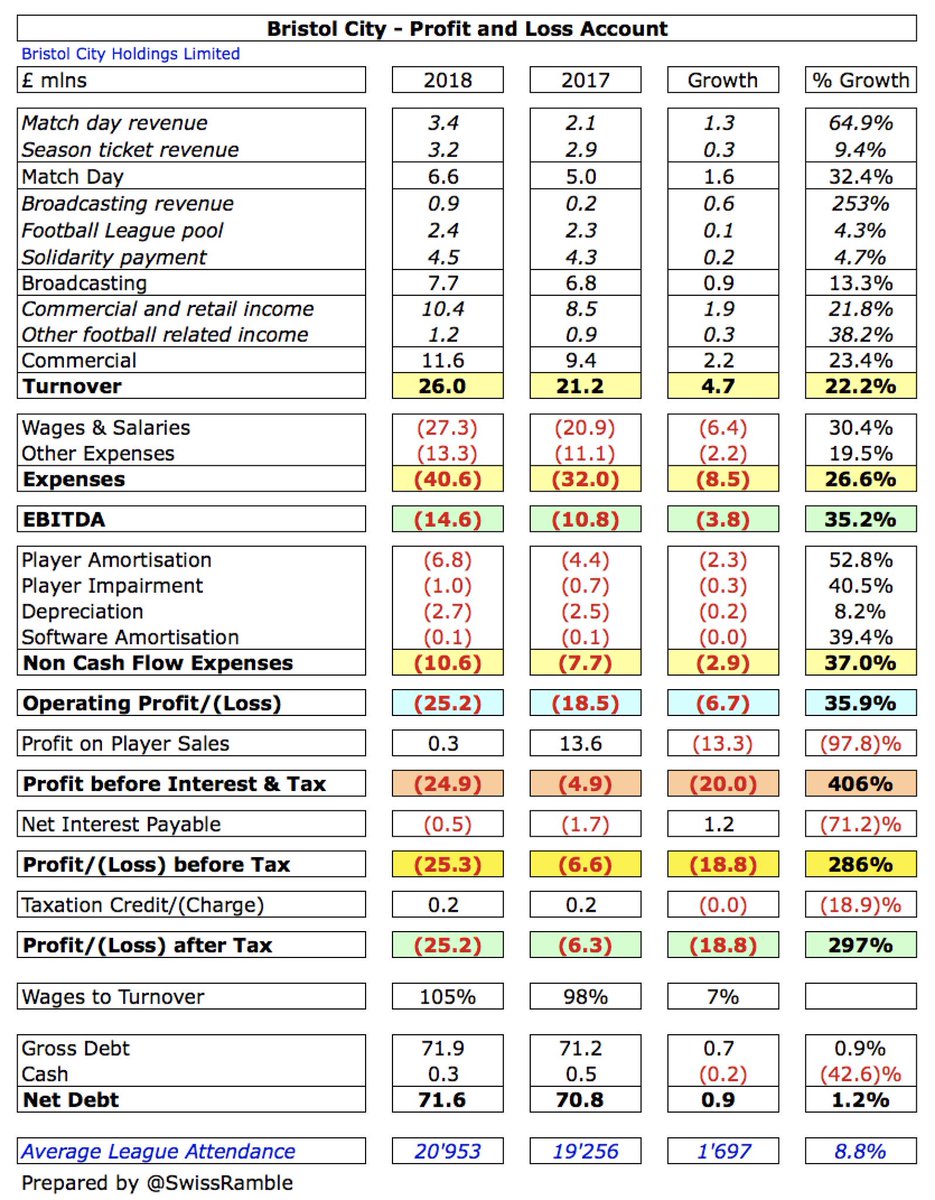
The good news was that all #BristolCity revenue streams were up: commercial by £2.2m (23%) to £11.6m; match day by £1.6m (32%) to £6.6m; and broadcasting by £0.9m (13%) to £7.7m. 
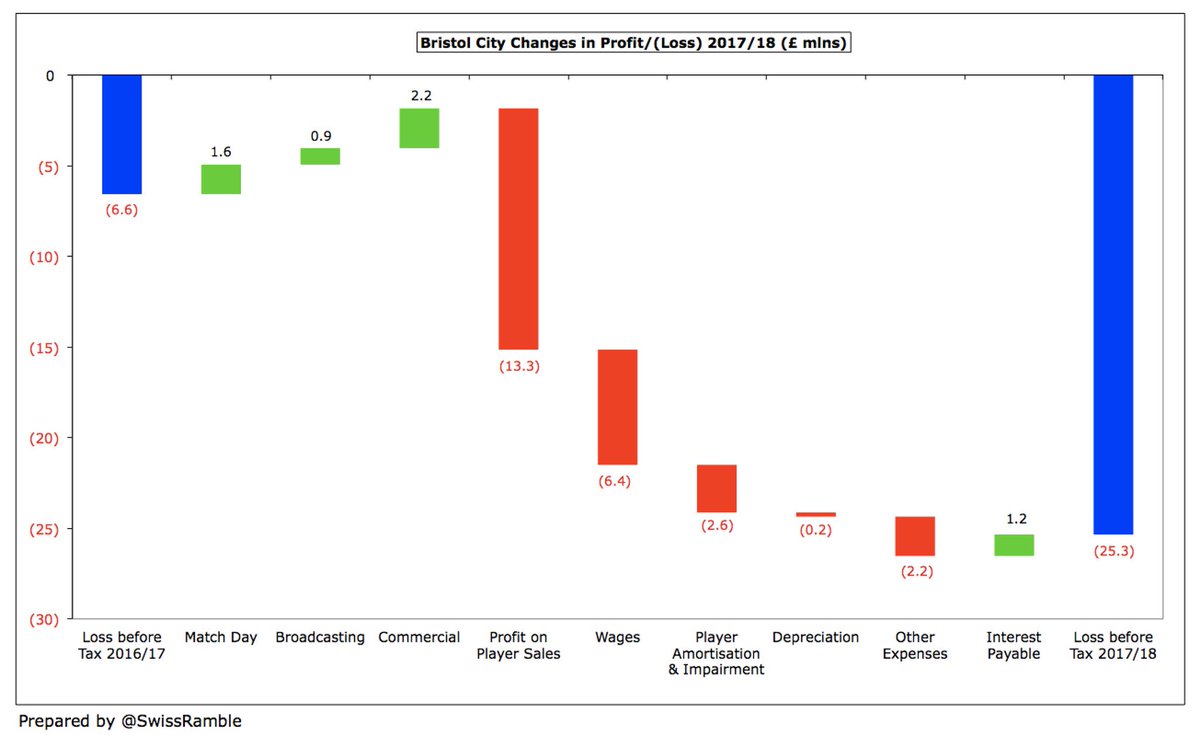
Parachute payments are made to clubs relegated from the Premier League in order to soften the blow of the significant reduction in revenue in the Championship, especially as many players’ wages remain at a high level. The following thread looks at how these payments work.
Although the 2016/17 financial results for the Championship are now a season out-of-date, they are the most recent published by the clubs, so people might still be interested in the comparisons as the new season kicks-off. Some thoughts in the following thread.
In contrast to the Premier League, only 6 clubs in the Championship made money, led by #NFFC £32m & #BarnsleyFC £13m. In this very competitive division most clubs over-extend in a bid to reach the lucrative top flight. Largest losses at 2 promoted clubs: #NUFC £47m & #BHAFC £39m. 
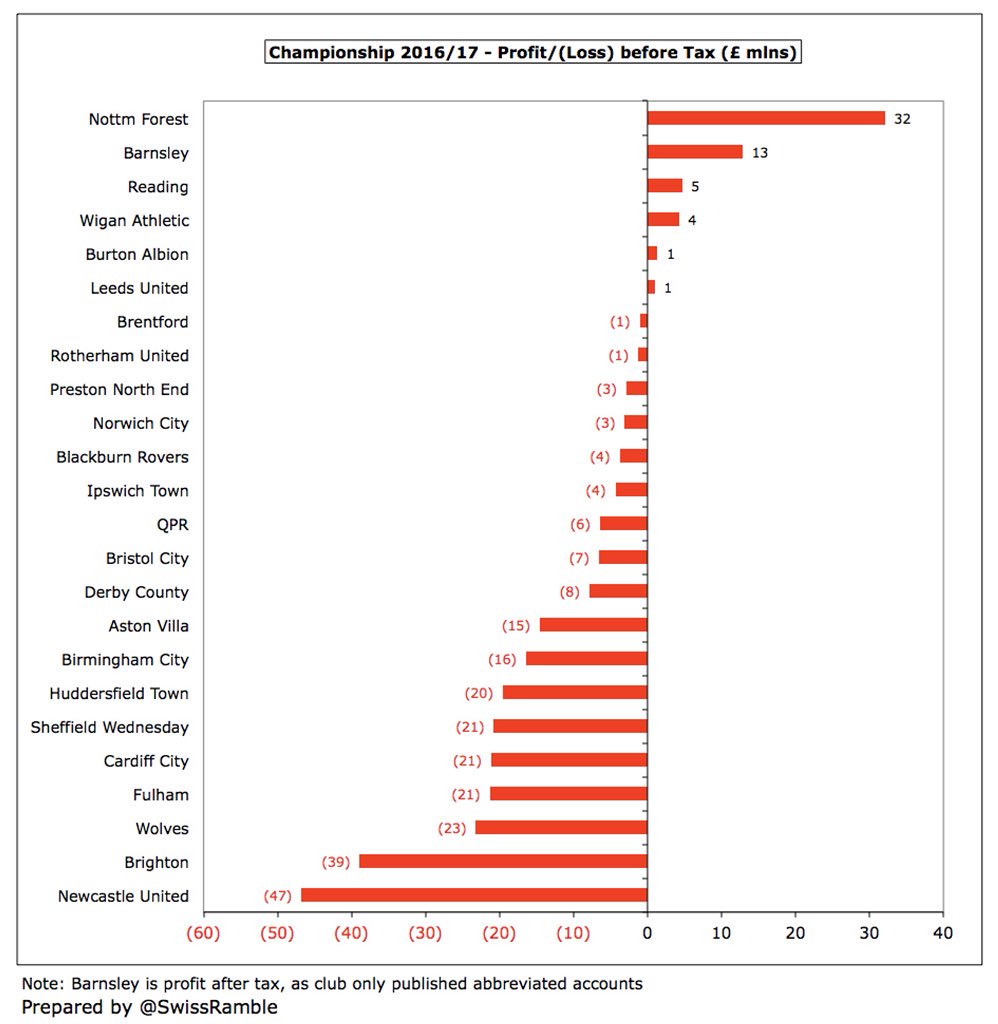
Some clubs’ figures impacted by significant exceptional items, so #NFFC (£40m) and #ReadingFC (£9m) were boosted by loan write-offs. In contrast, promotion bonuses adversely affected #HTAFC £12m, #NUFC £10m and #BHAFC £9m. Newcastle also booked £22m onerous contract provisions. 
